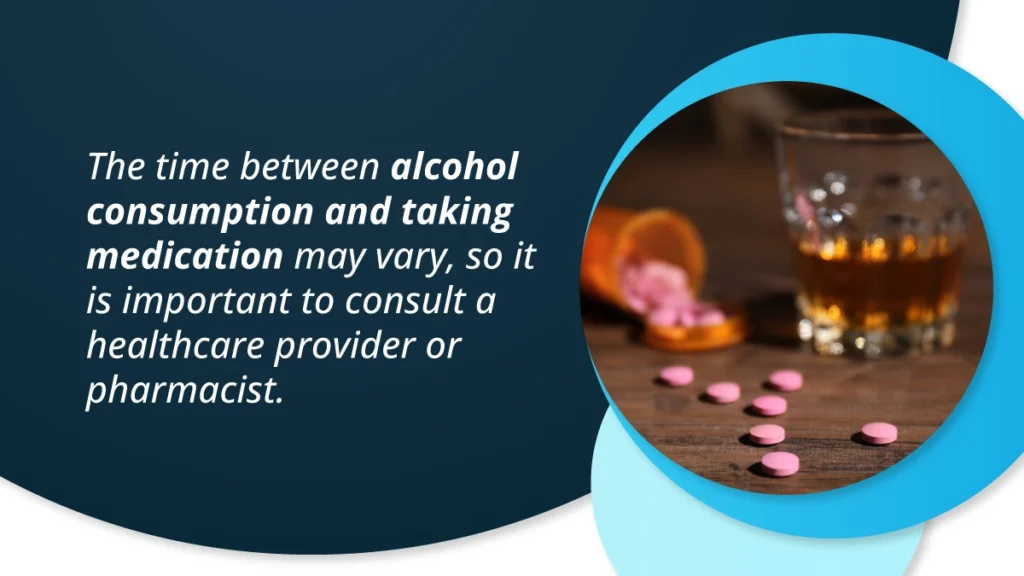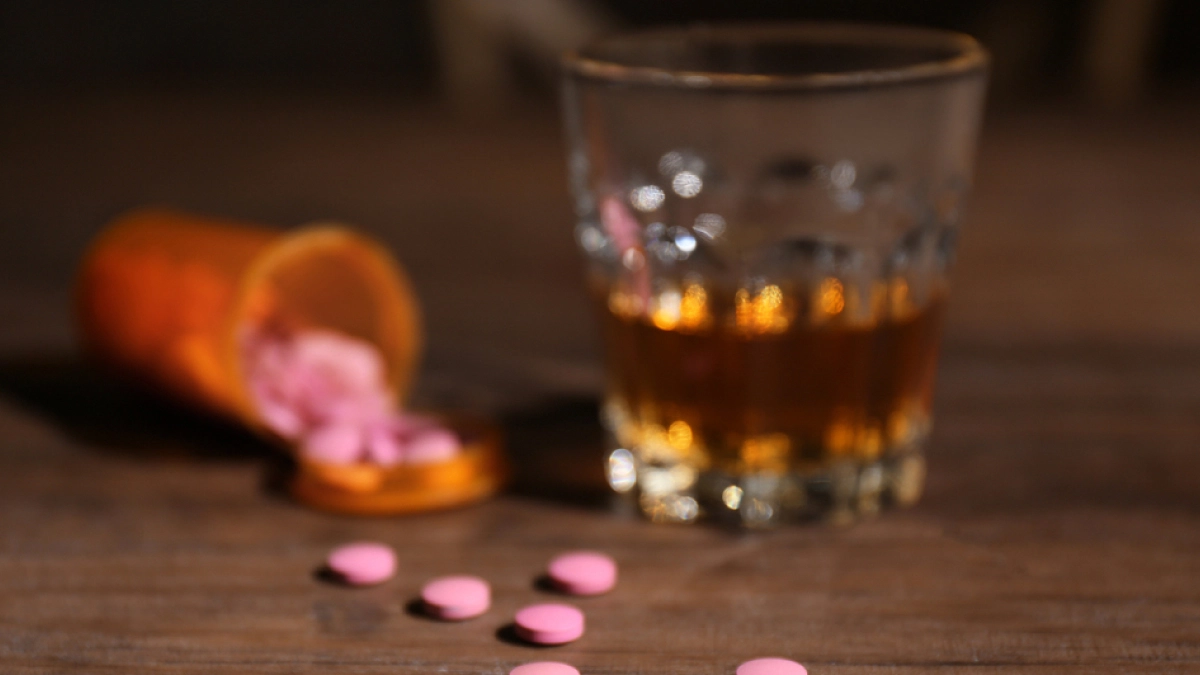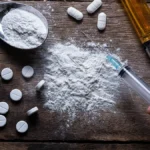Alcohol interactions and the simultaneous abuse of alcohol and illicit or counter drugs are critical issues in the United States. The harmful effects of these interactions, both in the short-term and long-term, can lead to severe health consequences and even fatalities.

Understanding the risks associated with alcohol consumption, as well as the specific interactions between alcohol and various drugs, is essential for harm reduction efforts. This article explores effective techniques for preventing and addressing alcohol and drug interactions.
By increasing awareness and implementing harm reduction strategies, individuals can make informed decisions to minimize the potential risks of concurrent alcohol and drug use. If you are struggling with alcohol and drug interactions, contact our rehab center, The Haven Detox-Little Rock.
Key Takeaways
Combining alcohol and drugs can adversely affect the body and increase risks. Here is what you need to know about the interactions between drugs and alcohol:
- Alcohol can interact with medications, altering their effectiveness and metabolism.
- The time between alcohol consumption and taking medication may vary, so it is important to consult a healthcare provider or pharmacist.
- Drug interactions with alcohol can affect the central nervous system, liver function, and overall health.
- Medication management and following healthcare provider instructions are essential for minimizing risks.
- Community outreach programs and government initiatives are vital in promoting harm reduction strategies.
Seek professional help from our reputable treatment center, The Haven Detox-Little Rock, for guidance and support in addressing alcohol and drug interactions. Contact us now at (501) 271-3342.
How Alcohol and Drugs Move through the Body
Alcohol and drugs significantly impact the body, affecting various systems and functions. Understanding how these substances move through the body is crucial for comprehending their effects and potential risks.
Read more to explore the processes of absorption, distribution, metabolism, and excretion, shedding light on how alcohol and drugs interact with the body and influence our overall well-being.
Absorption
Absorption is the initial step in the journey of alcohol and drugs through the body. When people consume alcohol, it quickly enters the bloodstream through the walls of the stomach and small intestine. This rapid absorption contributes to the almost immediate effects that alcohol can have on the body, including changes in blood pressure, motor control, and cognitive function.
People with high blood pressure or heart problems should be cautious with their alcohol consumption, as it can further affect their blood pressure and heart function. Similarly, drugs, whether prescription medications like antibiotics or illicit substances, can be absorbed through various routes such as ingestion, inhalation, or injection.
It is important for individuals to follow their healthcare provider’s instructions when taking prescription drugs and to be aware of any potential interactions between these medications and alcohol use.
Distribution
Once absorbed, alcohol and drugs undergo distribution throughout the body. The circulatory system carries these substances to various organs and tissues, allowing them to exert their effects. Different factors can influence the distribution process.
For example, certain medications may target specific organs or tissues, while alcohol can have a widespread impact on the central nervous system. Individuals need to consult their healthcare provider regarding any potential interactions between alcohol use and prescription drugs they may be taking.
Proper distribution of drugs is crucial for their effectiveness and desired therapeutic effects. People with heart disease or low blood pressure should be particularly cautious about their medications, such as beta-blockers, as these drugs can significantly impact their blood pressure and cardiovascular health.
Metabolism
Metabolism plays a vital role in the breakdown of alcohol and drugs in the body. Enzymes in the liver primarily metabolize alcohol, converting it into acetaldehyde and then into acetic acid, which is eventually eliminated. The rate at which alcohol is metabolized can vary among individuals, but on average, it takes about one hour for the liver to metabolize one standard drink.
Excessive alcohol consumption can overwhelm the liver, accumulating toxic byproducts and potentially causing liver damage over time. Prescription medications also undergo metabolism, affecting their effectiveness and duration of action.
Individuals must communicate with their healthcare provider about any potential interactions between alcohol use and prescription drugs they may be taking. Responsible alcohol consumption and adherence to prescribed medication dosages are essential for maintaining optimal health and preventing adverse effects.
Excretion
Excretion is the final step in eliminating alcohol and drugs from the body. The kidneys play a significant role in excreting alcohol by filtering it out of the blood and excreting it in the urine. On the other hand, drugs are typically eliminated through a combination of routes, including urine, feces, sweat, and breath.
Understanding the excretion process is essential to comprehend the duration of action and potential risks associated with alcohol and drug use. Individuals need to stay hydrated and maintain healthy kidney function to support the efficient excretion of alcohol and drugs from their bodies.
Alcohol and Drug Interactions
The combined use of alcohol and drugs can significantly impact the body, leading to synergistic or antagonistic effects. Understanding these interactions is crucial for individuals to make informed decisions and minimize the potential risks of concurrent alcohol and drug use.
Here are synergistic and antagonistic effects that can occur when alcohol and drugs are consumed together, shedding light on the potential consequences and precautions to consider.
Synergistic Effects
Synergistic effects occur when the combined use of alcohol and drugs intensifies their personal effects, leading to an amplified response in the body. For example, mixing alcohol with blood thinners can increase the risk of bleeding and potentially result in serious side effects such as internal bleeding or hemorrhages.
Similarly, the simultaneous consumption of alcohol and sedatives can lead to excessive sedation, respiratory depression, and even coma. It is important to note that various factors, including age, liver problems, kidney disease, and sudden changes in alcohol consumption, can potentiate the effects of alcohol.
These synergistic effects can result in life-threatening situations and must be taken seriously to avoid potential harm.
Antagonistic Effects
On the other hand, antagonistic effects occur when the simultaneous use of alcohol and drugs diminishes their personal effects. For instance, combining alcohol with pain relievers, particularly those containing acetaminophen, can increase the risk of liver damage. Alcohol can interfere with the liver’s ability to metabolize acetaminophen properly, leading to an increased likelihood of liver toxicity.
Additionally, mixing alcohol with antidepressants can reduce the effectiveness of the medication and potentially worsen symptoms of depression or anxiety. It is crucial to understand that the presence of alcohol can alter how certain drugs are processed by the body, potentially reducing their efficacy and increasing the risk of adverse effects.
It is important to note that illegal drugs can also interact with alcohol, leading to unpredictable and potentially dangerous outcomes. Combining alcohol with illicit substances can significantly increase the risk of alcohol poisoning, heart attacks, and other serious side effects. The active ingredients in illegal drugs can have unpredictable interactions with alcohol, further amplifying the potential harm.
Symptoms and Risks of Alcohol and Drug Interactions
When alcohol and drugs are used concurrently, there can be a multitude of symptoms and risks that arise. Understanding these potential complications is crucial for individuals to make informed decisions and minimize harm.
Here are the symptoms and risks associated with alcohol and drug interactions, focusing on organ damage, increased toxicity, and the risk of overdose. By recognizing these dangers, individuals can prioritize their health and well-being.
Organ Damage
One of the significant risks of alcohol and drug interactions is the potential for organ damage. Certain medications, such as nonsteroidal anti-inflammatory drugs (NSAIDs) used for pain relief, can cause internal bleeding when combined with heavy alcohol consumption.
This combination increases the risk of gastrointestinal bleeding, potentially leading to severe complications. In rare cases, this can result in life-threatening situations requiring immediate medical attention. Additionally, the liver and kidneys can be adversely affected by the concurrent use of alcohol and certain medications.
Chronic heavy alcohol consumption and certain medications can exacerbate liver damage or even lead to kidney failure. Patients with chronic conditions and substance use disorders should be especially cautious when using medications that can impact organ function.
Increased Toxicity
Another significant concern when combining alcohol and medications is the increased toxicity. Alcohol can interfere with the metabolism and elimination of drugs from the body, leading to potentially dangerous interactions.
For example, antipsychotic medications and alcohol can have dangerous interactions, causing sedation, impaired motor control, and even respiratory depression. Similarly, the combination of alcohol with certain heartburn medications, known as antacids, can impair the effectiveness of the medication and potentially exacerbate symptoms.
It is important for individuals to carefully read medication labels and consult healthcare professionals for guidance to avoid such interactions and potential harm.
Overdose
The risk of overdose is heightened when alcohol and drugs are used together. Combining substances can amplify their effects, leading to dangerous consequences. For instance, the concurrent use of alcohol and sedatives, such as benzodiazepines or opioids, can result in severe central nervous system depression, causing respiratory distress or even coma.
Furthermore, alcohol and certain antihistamines can have a cumulative sedative effect, increasing the risk of excessive drowsiness and impaired coordination. Overdose is a serious concern that can result in life-threatening situations, emphasizing the importance of avoiding the simultaneous use of alcohol and medications with soothing properties.
Individuals need to be aware of the potential symptoms that may indicate an alcohol and drug interaction. These symptoms can vary depending on the substances involved and the individual’s physiological response.
Some common symptoms may include dizziness, confusion, memory loss, changes in heart rate or blood pressure, gastrointestinal distress, excessive sedation, and respiratory depression. If any of these symptoms occur after the consumption of alcohol and medications, seeking immediate medical attention is crucial.
Harm Reduction Strategies
Harm reduction strategies are vital in promoting the well-being and safety of individuals, particularly when it comes to the use of alcohol and medications. These strategies aim to minimize potential risks and adverse effects through education, medication management, community outreach, and government programs.
By implementing these approaches, individuals, healthcare professionals, and communities can work together to foster safer practices and protect vulnerable populations, such as older people, from potential harm.
Education and Awareness
Education and awareness play a crucial role in harm reduction efforts. By providing comprehensive information about the potential risks and interactions between alcohol and medications, individuals can make informed decisions regarding their substance use.
Educational campaigns, brochures, and online resources can effectively disseminate this knowledge to the public. Healthcare professionals, such as pharmacists, can also play a vital role in providing accurate and accessible information to individuals regarding the safe use of alcohol and over-the-counter medications.
They can offer guidance on the potential risks associated with consuming alcohol while taking certain medications, such as blood pressure medications, which may increase the risk of adverse effects. By increasing education and awareness, individuals can better understand the potential consequences and take proactive measures to protect their health.
Medication Management
Effective medication management is an essential component of harm reduction strategies. Older people, in particular, are at an increased risk of experiencing medication-related issues due to age-related changes in drug metabolism and potential interactions. Individuals must communicate openly with their healthcare providers about their alcohol consumption and the medications they are taking.
This information enables healthcare professionals to make informed decisions and provide appropriate advice. Pharmacists, in particular, can offer valuable insights into potential interactions between alcohol and over-the-counter medications.
They can advise individuals on the safe use of these medications and recommend alternatives when necessary. Proper medication management, coupled with responsible alcohol consumption, can help individuals minimize the risk of adverse effects and ensure the effectiveness of their treatment regimens.
Community Outreach
Community outreach initiatives are instrumental in promoting harm reduction strategies. These programs aim to reach diverse populations, including older people, and raise awareness about the potential risks of alcohol and medication interactions.
Community organizations, healthcare providers, and local authorities can collaborate to organize workshops, support groups, and informational sessions focused on harm reduction. These initiatives can provide a platform for individuals to share their experiences, seek guidance, and access resources to promote safer substance use.
Additionally, community outreach programs can facilitate the distribution of educational materials, such as brochures or pamphlets, to reach a wider audience. By fostering community engagement and providing accessible resources, harm reduction efforts can effectively address the specific needs of different populations.
Government Programs
Government programs and policies are critical in supporting and implementing harm-reduction strategies. Regulatory measures can be implemented to ensure proper labeling and warning labels on medications and alcohol products, highlighting potential interactions and risks. Public health campaigns led by governmental agencies can educate the public about the dangers of combining alcohol and certain medications.
Additionally, funding can be allocated to support research on alcohol and medication interactions and the development of evidence-based harm reduction initiatives. Collaborations between government entities, healthcare organizations, and community stakeholders are essential to effectively implement these programs and create a safer environment for individuals.
Harm reduction strategies are vital in mitigating the risks associated with alcohol and medication interactions, particularly for vulnerable populations such as older people. Education and awareness campaigns, medication management, community outreach, and government programs are crucial in promoting safer practices and protecting individuals from potential harm.
By fostering collaboration between individuals, healthcare professionals, and communities, harm reduction efforts can help create a safer and healthier society.
Frequently Asked Questions (FAQs)
What drug should not be taken with alcohol?
Several drugs should not be taken with alcohol due to potential interactions and increased risks. One example is acetaminophen, a common pain reliever. When combined with alcohol, it can increase the risk of liver damage. Another example is certain antidepressant medications, such as selective serotonin reuptake inhibitors (SSRIs).
Alcohol can intensify the sedative effects of these medications, leading to increased drowsiness and impaired coordination. Blood-thinning medications, such as warfarin, should also be avoided with alcohol as they can increase the bleeding risk.
It is important to consult a healthcare provider or pharmacist to identify drugs that should not be taken with alcohol.
What are drug interactions with alcohol?
Drug interactions with alcohol occur when alcohol is consumed in combination with certain medications or drugs. These interactions can have various effects on the body. Alcohol can enhance or diminish the effects of certain drugs, making them more potent or less effective. Combined with medications, it can also increase the risk of side effects or adverse reactions.
Drug interactions with alcohol can affect the central nervous system, leading to drowsiness, impaired coordination, and cognitive impairment. They can also impact liver function and metabolism, potentially causing liver damage or interfering with the breakdown of medications in the body.
It is important to read medication labels, follow healthcare provider instructions, and seek professional advice to minimize the risks associated with drug interactions with alcohol.
What effect is combining alcohol and drugs known to have?
Combining alcohol and drugs can have various effects on the body. It is important to note that the specific effects can vary depending on the substances involved. However, in general, combining alcohol and drugs can lead to increased risks and potential harm.
The effects can range from intensified sedation, impaired coordination, and impaired judgment to respiratory depression and overdose. Alcohol can interact with drugs, altering their effectiveness, metabolism, and elimination from the body. This can lead to unpredictable reactions and potentially dangerous consequences.
It is crucial to consult with a healthcare provider or pharmacist before combining alcohol and drugs.
How long should I wait after drinking alcohol to take medicine?
When taking medicine after drinking alcohol, it is important to consider the potential interactions and risks involved. The time you should wait before taking medicine after consuming alcohol can vary depending on several factors.
It is generally recommended to wait at least a few hours after drinking alcohol before taking medication. However, certain medications may require a longer waiting period. It is crucial to follow the instructions provided by your healthcare provider or pharmacist.
They can provide personalized advice based on your specific medication and health condition to ensure your safety and maximize the effectiveness of the treatment.
Embrace a Life beyond Addiction at The Haven Detox-Little Rock
Ready to embark on a transformative journey toward a life beyond addiction? Look no further than The Haven Detox-Little Rock. Our expert team is dedicated to guiding you through the complexities of alcohol and drug interactions, ensuring your safety and well-being.
Experience a supportive and nurturing environment where you can break free from addiction and embrace a brighter future. Our effective treatment programs include detoxification, residential treatment, and many more.
With personalized care, evidence-based treatments, and a focus on harm reduction, we provide the tools and resources to overcome substance abuse challenges. Take the first step towards healing and recovery.Contact The Haven Detox-Little Rock today and discover the path to a life of sobriety and fulfillment. Your new beginning awaits. Contact our confidential counselor at (501) 271-3342.




